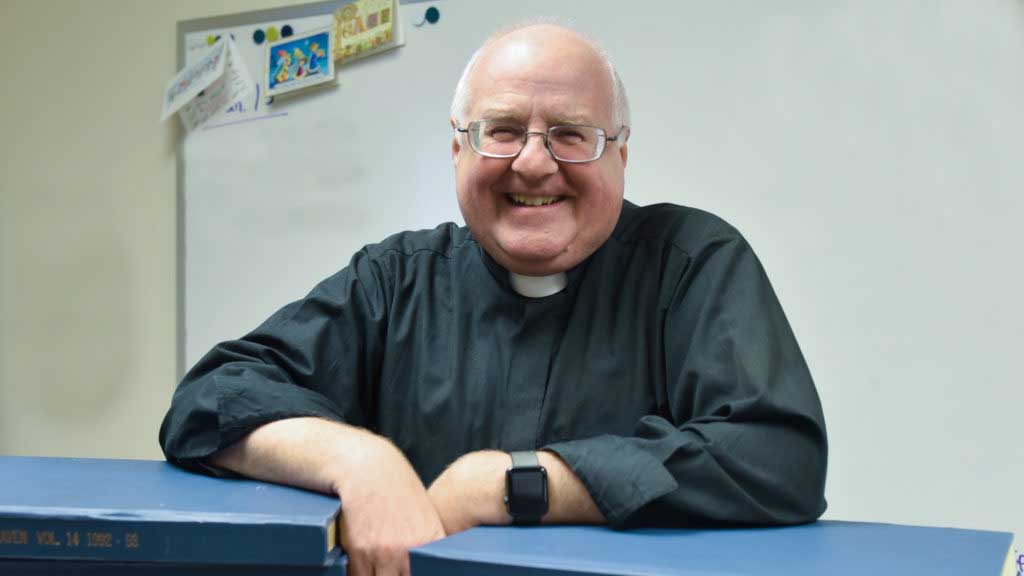
by Father Mark Goldasich
“Uncomfortable and moving.”
Those words were in my March 26 column here, anticipating an upcoming exhibit at Union Station in Kansas City, Missouri.
On Oct. 20, I experienced this exhibit firsthand. To the adjectives above, I’d add another: sobering. I went on a Wednesday afternoon and was amazed at the crowd . . . and the reverential silence. I spent over three hours there and would have spent more had it not been closing time.
The superbly organized exhibit, called “Auschwitz: Not Long Ago, Not Far Away,” contains some 700 artifacts and 400 photos. Adding greatly to the experience is a cellphone-like device and headphones which add an audio component to over 60 stops along the way.
I had no idea of the physical scale of Auschwitz, the deadliest of the six Nazi concentration camps. In its four-plus years of existence, over 1 million people, primarily Jews, were murdered there. The perpetrators of these atrocities considered themselves members of the “Master Race,” and those they were exterminating “Untermenschen” — in other words, “inferior races,” or “subhumans.”
The question that refused to leave my mind was: If the Nazis truly believed that murdering, torturing and starving these people was somehow the “right and moral” thing to do, then why, as the Russians and Allies were closing in, did they seek to destroy any evidence that these concentration camps existed? The only conclusion I can reach is that the Nazis knew on the deepest human level that these were horrors they were committing.
In the end, it became clear that the “Master Race” — as with all who subscribe to some supremacist ideology — are in fact the least humane and the most morally flawed.
But I digress. I do highly recommend visiting the Auschwitz exhibit, though, as it is a memorable and unforgettable experience. It runs until Jan. 30, 2022, but tickets go fast.
So, how can one make the world a holier place? The Otis Redding song, that Aretha Franklin literally spelled out, says it all: “R-E-S-P-E-C-T.” This story illustrates that:
Years ago, a boy climbed onto a stool at a soda shop. He asked the waitress, “How much is an ice cream sundae?” “Fifty cents,” she replied.
The boy reached into his pocket and counted a handful of change. Next, he asked, “Uh, how much is a dish of plain ice cream?” The waitress rolled her eyes and said, “Thirty-five cents.”
Again, the boy counted his coins and said, “I’ll have the plain ice cream, please,” as he set a quarter and two nickels on the counter. The waitress picked up the coins and delivered the ice cream. About 10 minutes later, she found the boy gone and the ice cream eaten.
As she cleared the dish, she swallowed hard. Underneath, she found two nickels and five pennies. Although the boy had enough for a sundae, he ordered plain ice cream so he could leave a tip. (Story adapted from “1001 Illustrations That Connect,” edited by Craig Brian Larson and Phyllis Ten Elshof.)
Perhaps we can most respect the victims and survivors of Auschwitz by pondering these words of Charlotte Delbo found on a wall at the end of the exhibit:
“You who are passing by, I beg you: Do something. Learn a dance step. Something to justify your existence, something that gives you the right to be dressed in your skin, in your body hair. Learn to walk and to laugh, because it would be too senseless after all, for so many to have died, while you live doing nothing with your life.”


